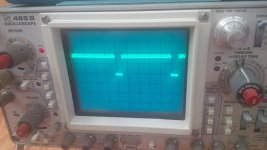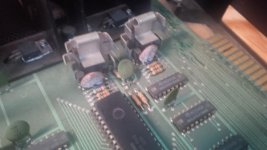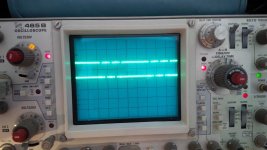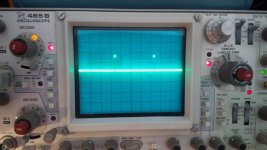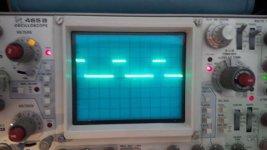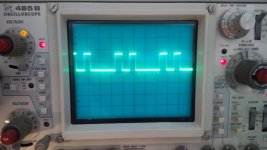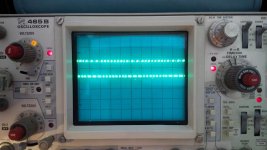The Vertical Drive signal is a standard +5V signal located at chip D8-pin11 on sh
eet 3 of the 320008 assembly schematic. At the top right of sheet 3, you can also see it is at connector J7- pin3. J7 is the signal connector that goes to the monitor. Note that J7-pin6 is missing and is used to properly orient the connector. The waveform is a skinny negative going pulse of about 2 mS and the pulse period is about 16.6 mS (60Hz). With power off, remove the J7 and hook the scope to pin 3 on the board. Power up and check the waveform. The monitor of course will be dark. You may see a dot for a second in the middle of the screen. When finished, power off and properly reconnect the J7 connector. Before removing any connector, it may be good to take a photo of the connector mated on on the board or mark pin 1 to make sure you reconnect properly.

